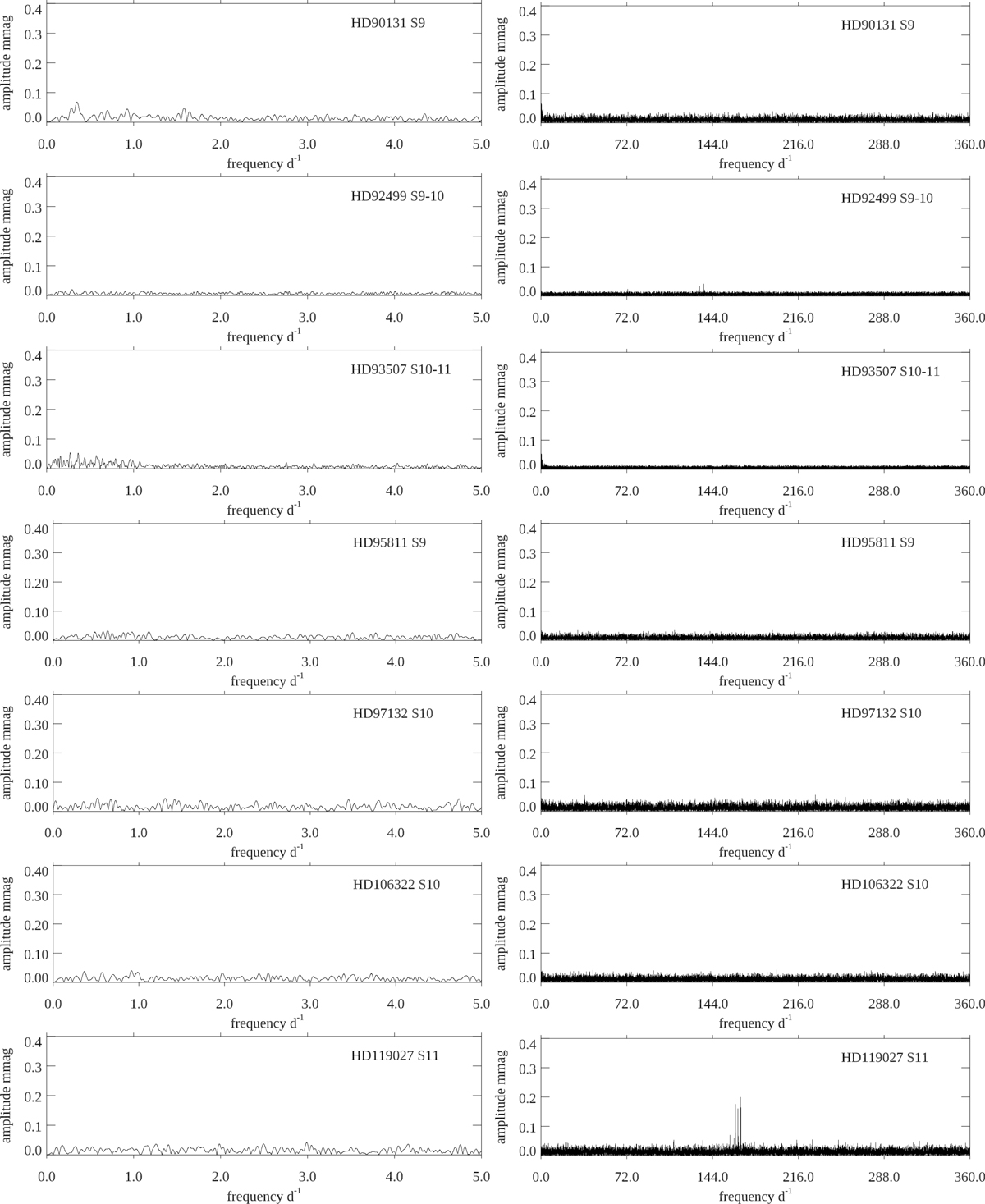Fig. A.6.

Same as Fig. 2. HD 92499 has no rotational variation, but is a known roAp star discovered by Elkin et al. (2010) with two roAp peaks at 133.2811 d−1 (A = 42 μmag) and 136.7034 d−1 (A = 34 μmag) in these TESS data; these two frequencies have a separation of 40 μHz, which is plausibly the large separation, or half the large separation. HD 119027 has no rotational variation, but is a known roAp star discovered by Martinez & Kurtz (1991). Martinez et al. (1998b) found this star to be multi-periodic, as can be seen in this figure, with a possible large separation 26 μHz. The principal peaks in this figure are separated by 26 μHz. The absolute magnitude and effective temperature given by Holdsworth et al. (2018) show this star to be near the zero age main sequence, hence the large separation is more probably 52 μHz, and the modes are of alternating even and odd degree.
Current usage metrics show cumulative count of Article Views (full-text article views including HTML views, PDF and ePub downloads, according to the available data) and Abstracts Views on Vision4Press platform.
Data correspond to usage on the plateform after 2015. The current usage metrics is available 48-96 hours after online publication and is updated daily on week days.
Initial download of the metrics may take a while.


